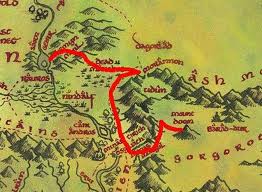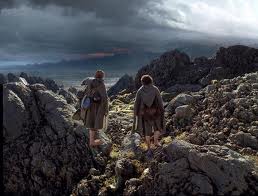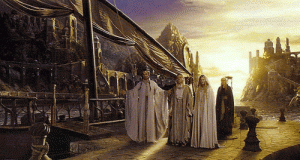Intellectual Property Inquiry
Intellectual Property Unit Plan Outline
Rationale
Why encourage students to explore, discover, and create definitions of intellectual property?
Intellectual property, with its related concerns and issues, is an increasingly important topic for discussion in today’s world. As ideas become more and more accessible, shareable, and adaptable through the internet, and its endless informational and social platforms, it is integral that educators foster a meaningful understanding of both the concept and importance of intellectual property to our global community and the future of creative expression.
Why use technology to facilitate the intellectual property inquiry process?
This topic of inquiry offers an incredible opportunity to support students in developing their digital literacy and ICT skills concurrently with their understanding of culture and ethical citizenship, critical thinking abilities, and other 21st Century Competencies.
In line with my intellectual property inquiry, I would also like to outline a unit plan that would introduce, discuss, and illustrate the challenges, frustrations, and ultimately, necessity of protecting intellectual property. I told one of my classmates that I wanted to give students an opportunity to create something, something they could be proud of, so that I could mock steal their creation, post it to my fake blog, and pretend to gain some kind of financial benefit by taking credit for their work. She told me about her husband, an avid music and movie downloader, who created his own app to sell in the Windows phone app store. Unfortunately, there is a loophole in the Windows system where people can pay for, download, and immediately return an app for a full refund without having that app removed from their phone. In other words, they are benefiting from but not paying for the app. He was understandably annoyed, but interestingly, because of his own downloading habits, felt hypocritical in taking any further action in the matter. To truly understand the personal, and eventually, the global significance of intellectual property theft, students need to experience that same feeling of frustration, and if possible, hypocrisy. Extensive conversation with and inspiration and ideas from Jenny, along with this anecdote, gave rise to a unit plan and lesson ideas.
Introductory Activity
Students would be asked to brainstorm app ideas based on their own needs, interests, hobbies, and talents. Their ideas could be based on existing apps (with significant improvements) or completely original (Surely, there’s something new under the sun?). After sharing their ideas with their classmates, students could group themselves with those that had similar ideas or gravitate towards those with a particularly intriguing idea and work in small groups to develop one app per group, complete with target audience, purpose (what void are they filling?), full description, logo, price, and marketing slogan. It would be wonderful to use computers, if possible, to allow for some app research and to give students an opportunity to design and create their logo using graphic design software.
Once students had shared (made public) their final products with their classmates, I would simulate what it would be like to have one’s ideas stolen. The names of the apps could be slightly altered, or simply used as is, and the logos, slogans, and a brief description would be posted to a fake teacher created blog. Students would be informed of this and the fact that each person who navigates to the teacher’s site, each click of interest, and each official download would result in payment for the teacher who had stolen their intellectual property. Students would then be asked to take a poll to identify which apps they would buy if they had the chance which would further intensify the experience of having to watch as others benefit from their work. Students could share their immediate reactions through a platform like Twitter, an invite only Facebook group, or a blog forum. This then lends itself to a discussion of how it feels to watch as your time, effort, and imagination are exploited for gain by another person who had no part in the creative or production processes. Students can also be asked to examine their own habits. Do they willingly steal from others in the same way they were stolen from? Students could share their immediate reactions through twitter and conversation with the group and be asked to mine their feelings in more depth as a take-home assignment to be posted to their personal blog. Students could also be assigned one or two classmates to respond to and discuss this issue with online. If possible, each creative group could be grouped together online in their own forum to share and discuss their reactions in greater detail.
Key Concepts Introduced: What Is Intellectual Property?
From here, students would be engaged in a discussion about the meaning and importance of intellectual property. After a freewrite and a class brainstorming session, and with teacher guidance, students could use the following infographic to determine the types, guidelines for, and implications of the various legal categories of intellectual property. Students would be placed in small groups and asked to use the internet to find up-to-date, focused, and detailed information about one type of intellectual property in reference to Canadian law, as opposed to the American (particularly Californian) point-of-view expressed below. Students would also be encouraged to find examples, preferably Canadian, to illustrate their findings. This would lead to a jigsaw discussion where students could share their new found expertise with their classmates. They would also be asked to write about their research process, findings, and reactions on their blog and in response to and in comparison with one or two assigned classmates’ blog posts.
Discussion Topic: Why Is Intellectual Property Worth Protecting?
Following a freewrite, wherein students identify their position on the presented question, and class discussion/brainstorm, students would be presented with one group’s insights into the importance of intellectual property. The website Ideas Matter. expresses five reasons why…ideas matter. Their manifesto for the protection of intellectual property includes the following “Reasons Why Ideas Matter”:
The Benefits of Intellectual Property for Innovation, The Economy and Society:
1. Intellectual property promotes economic growth and development
2. Intellectual property encourages innovation and creativity
3. Intellectual property benefits companies large and small
4. Intellectual property is good for consumers
5. Intellectual property provides long-term benefits for society
Students could be given the opportunity to explore one of these suggested reasonings in greater detail, using the Ideas Matter. website as a starting point, but by no means the only source, for their research. After which, the class could come back together to discuss their findings and whether or not their positions, ideas, and opinions changed or remained the same, or were perhaps even strengthened, as a result of their inquiry. Students would be asked to discuss their process and resulting opinion (“Did you change your mind? If so, what changed your mind?”) in a blog post and in response to one or two other student’s blog posts.
Discussion Topic: How Can We Protect Intellectual Property?
Students should be encouraged to follow a path of inquiry that considers the issues and theories around and challenges and successes of protecting intellectual property by considering a variety of different resources and perspectives, including case studies and presentations, such as the following:
1. Lawrence Lessig: Laws that choke creativity
2. The Oatmeal and FunnyJunk legal dispute and Forbes.com‘s take on the issue

3. Amanda Palmer: The art of asking
There is so much to be explored about this issue, including creative solutions to intellectual property laws like Creative Commons, by donation compensation for artists, crowd funding, and more. By considering other points-of-view, sharing their own ideas, and willingly discussing it all, students can gain a new understanding of intellectual property, why it matters, and how they can play a part in protecting both their own and other people’s ideas, so they can help build a positive future for creative expression in this world.
This topic could lead to in depth discussion and instruction, through research, activities, and debate, about why and how to properly quote, paraphrase, and cite other people’s ideas. Here is a link to a blog I have started to create for students that is dedicated to helping students research, write, and reference in an effective, responsible, and respectful way. The “Reference” page presents various questions and resources to inspire thought and discussion around the concept and importance of intellectual property. I have a long way to go, but this is a start.
Final Project
As a final assignment, students could be given the opportunity to create, implement, and gather the data from a grade wide survey on their peers’ understanding of intellectual property and the related laws. The data from this survey could be used to choose paths of inquiry and develop presentations that would then be presented by the students to their peers to help their classmates understand the concept and importance of intellectual property and the ways that students like them can meaningfully protect the value of ideas in the world economy. This survey and inquiry could also result in a student produced and curated blog or website that provides student created and collected resources for vetting sources, citation, etc. Students could produce their own resources based on their research and experience to help their peers cite properly and fully understand – from a student perspective – why it is important. Students could complete research, and perhaps even interviews, to gain a better understanding of the creative process from an author’s view, the editing and publishing processes from professionals, etc., so that they can put a human face to the finished product they see, read, and benefit from. And, of course, they could do the same with film creators (writers, directors, and producers), photographers, musicians, and the authors of and contributors to other creative products. In this way, they can gain a real world understanding of who is being credited when credit is due. And, hopefully, by putting thought, time, and effort into their own products, they can gain a better appreciation for the ideas and hard work of others. Plus, there is always room for an essay, perhaps a persuasive essay, or two!
Works Cited
“Amanda Palmer: The art of asking.”TED: Ideas worth spreading, Mar. 2013. Web. 21 July 2013. <http://www.ted.com/talks/amanda_palmer_the_art_of_asking.html>.
Clay, Kelly . “Funny Junk Drops Frivolous Lawsuit Against The Oatmeal.” Forbes.com, 4 July 2012. Web. 21 July 2013. <http://www.forbes.com/sites/kellyclay/2012/07/04/funny-junk-drops-frivolous-lawsuit-against-the-oatmeal/>.
“Ideas Matter, for society, business, and individuals.” Ideas Matter, n.d. Web. 18 July 2013. <http://www.ideasmatter.com/Default.asp>.
“Intellectual Property Infographic Explained through Google.” Pasha’s San Diego Business Attorney Blog. Top Floor Legal, PC, n.d. Web. 18 July 2013. <http://www.pashalaw.com/daily-business-legal-tip/intellectual-property-infographic-explained-google>.
Lessig, Lawrence . “Lawrence Lessig: Laws that choke creativity.” TED: Ideas worth spreading, Nov. 2007. Web. 21 July 2013. <http://www.ted.com/talks/larry_lessig_says_the_law_is_strangling_creativity.html>.
“The Oatmeal and FunnyJunk legal dispute – Wikipedia, the free encyclopedia.” Wikipedia, the free encyclopedia. N.d. Web. 21 July 2013. <http://en.wikipedia.org/wiki/The_Oatmeal_and_FunnyJunk_legal_dispute>.






